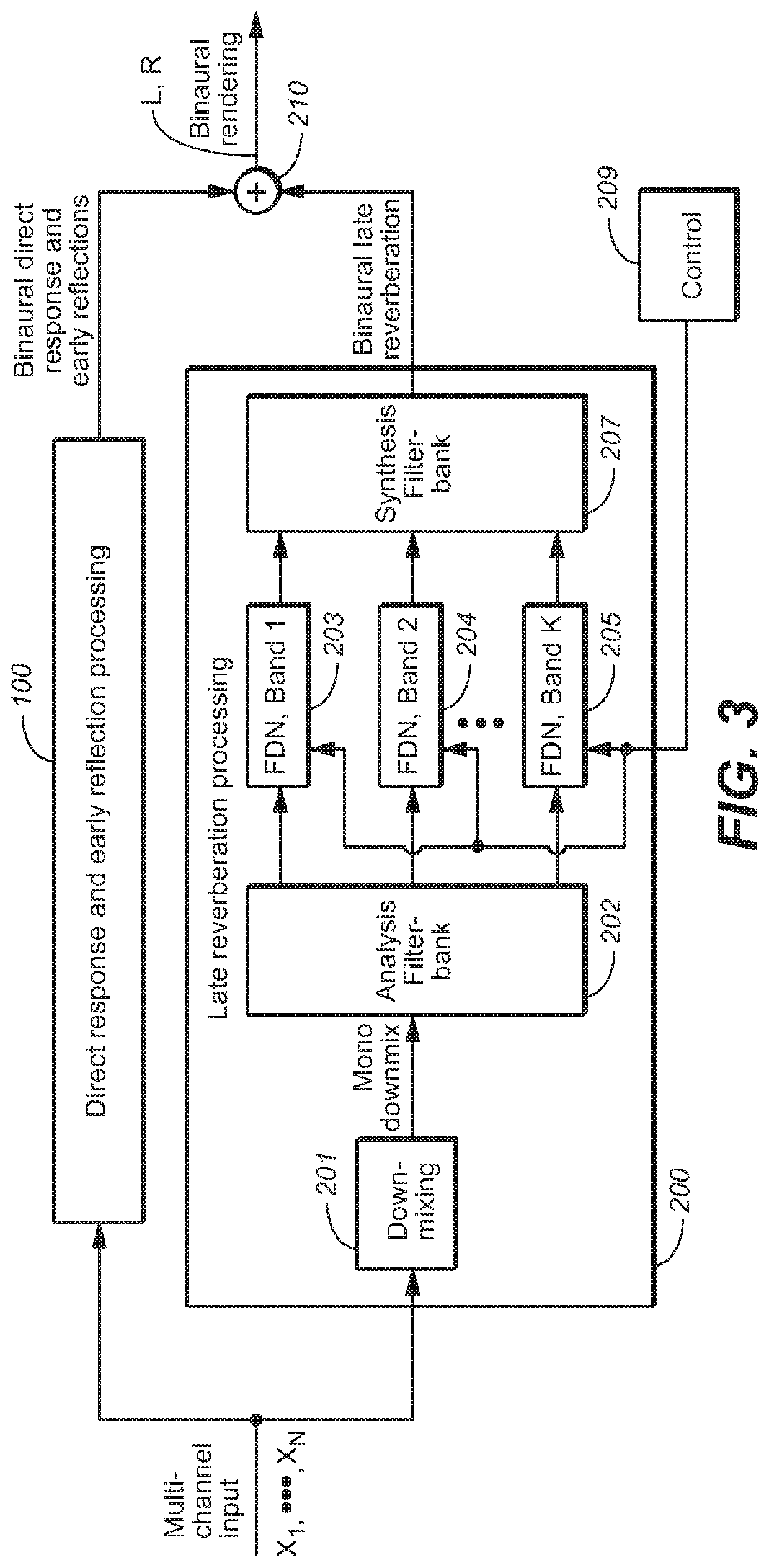Generating binaural audio in response to multi-channel audio using at least one feedback delay network
a multi-channel audio and feedback delay technology, applied in the field of headphone virtualization methods, can solve the problems of not being able to accurately reproduce an lfe channel, many consumer headphones are not capable of providing sufficient or robust cues regarding source distance, etc., to achieve efficient binaural rendering, improve the matching of acoustic environments, and achieve natural sound outputs.
- Summary
- Abstract
- Description
- Claims
- Application Information
AI Technical Summary
Benefits of technology
Problems solved by technology
Method used
Image
Examples
Embodiment Construction
[0078]Many embodiments of the present invention are technologically possible. It will be apparent to those of ordinary skill in the art from the present disclosure how to implement them. Embodiments of the inventive system and method will be described with reference to FIGS. 2-14.
[0079]FIG. 2 is a block diagram of a system (20) including an embodiment of the inventive headphone virtualization system. The headphone virtualization system (sometimes referred to as a virtualizer) is configured to apply a binaural room impulse response (BRIR) to N full frequency range channels (X1, . . . , XN) of a multi-channel audio input signal. Each of channels X1, . . . , XN, (which may be speaker channels or object channels) corresponds to a specific source direction and distance relative to an assumed listener, and the FIG. 2 system is configured to convolve each such channel by a BRIR for the corresponding source direction and distance.
[0080]System 20 may be a decoder which is coupled to receive ...
PUM
 Login to View More
Login to View More Abstract
Description
Claims
Application Information
 Login to View More
Login to View More - R&D
- Intellectual Property
- Life Sciences
- Materials
- Tech Scout
- Unparalleled Data Quality
- Higher Quality Content
- 60% Fewer Hallucinations
Browse by: Latest US Patents, China's latest patents, Technical Efficacy Thesaurus, Application Domain, Technology Topic, Popular Technical Reports.
© 2025 PatSnap. All rights reserved.Legal|Privacy policy|Modern Slavery Act Transparency Statement|Sitemap|About US| Contact US: help@patsnap.com



